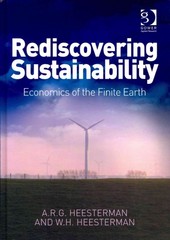Question
Y6 Government spending reversal, fiscal deficit, and multipliers. Analyze the effects of an increase in current government spending financed with public debt and a reduction
Y6
Government spending reversal, fiscal deficit, and multipliers. Analyze the effects of an increase in current government spending financed with public debt and a reduction in future gov- ernment spending (G = G 1+r > 0) on the main endogenous variables of the real intertemporal model with investment. Note that G > 0, G < 0, and, ceteris paribus, taxes do not change. (a) Show that this policy satisfies the government's intertemporal budget constraint. (b) Provide a graphical analysis using the supply-demand diagrams for the labor and goods markets. Label ALL the initial and new items in your graph. (c) What is the value of the government spending multiplier before the change in the real interest rate? Put differently, what is the value of the shift of the output demand (Y ) assuming r = 0. Justify. (d) What is the value (or range of values) of the government spending multiplier after the change in the real interest rate? Is there a crowding-out effect? Explain briefly. (e) What are the effects on w, r, Y , N , C, I, and l. Explain the economic intuition using a diagram of causalities. (f) What are the main differences between this policy and the one discussed in class (G = T > 0) in terms of the (i) current fiscal deficit, (ii) future fiscal deficit, (iii) public debt, (iv) crowding- out effect, and (v) the government spending multiplier? Explain briefly.Government spending reversal, fiscal deficit, and multipliers. Analyze the effects of an increase in current government spending financed with public debt and a reduction in future gov- ernment spending (G = G 1+r > 0) on the main endogenous variables of the real intertemporal model with investment. Note that G > 0, G < 0, and, ceteris paribus, taxes do not change. (a) Show that this policy satisfies the government's intertemporal budget constraint. (b) Provide a graphical analysis using the supply-demand diagrams for the labor and goods markets. Label ALL the initial and new items in your graph. (c) What is the value of the government spending multiplier before the change in the real interest rate? Put differently, what is the value of the shift of the output demand (Y ) assuming r = 0. Justify. (d) What is the value (or range of values) of the government spending multiplier after the change in the real interest rate? Is there a crowding-out effect? Explain briefly. (e) What are the effects on w, r, Y , N , C, I, and l. Explain the economic intuition using a diagram of causalities. (f) What are the main differences between this policy and the one discussed in class (G = T > 0) in terms of the (i) current fiscal deficit, (ii) future fiscal deficit, (iii) public debt, (iv) crowding- out effect, and (v) the government spending multiplier? Explain briefly.
Step by Step Solution
There are 3 Steps involved in it
Step: 1

Get Instant Access to Expert-Tailored Solutions
See step-by-step solutions with expert insights and AI powered tools for academic success
Step: 2

Step: 3

Ace Your Homework with AI
Get the answers you need in no time with our AI-driven, step-by-step assistance
Get Started


